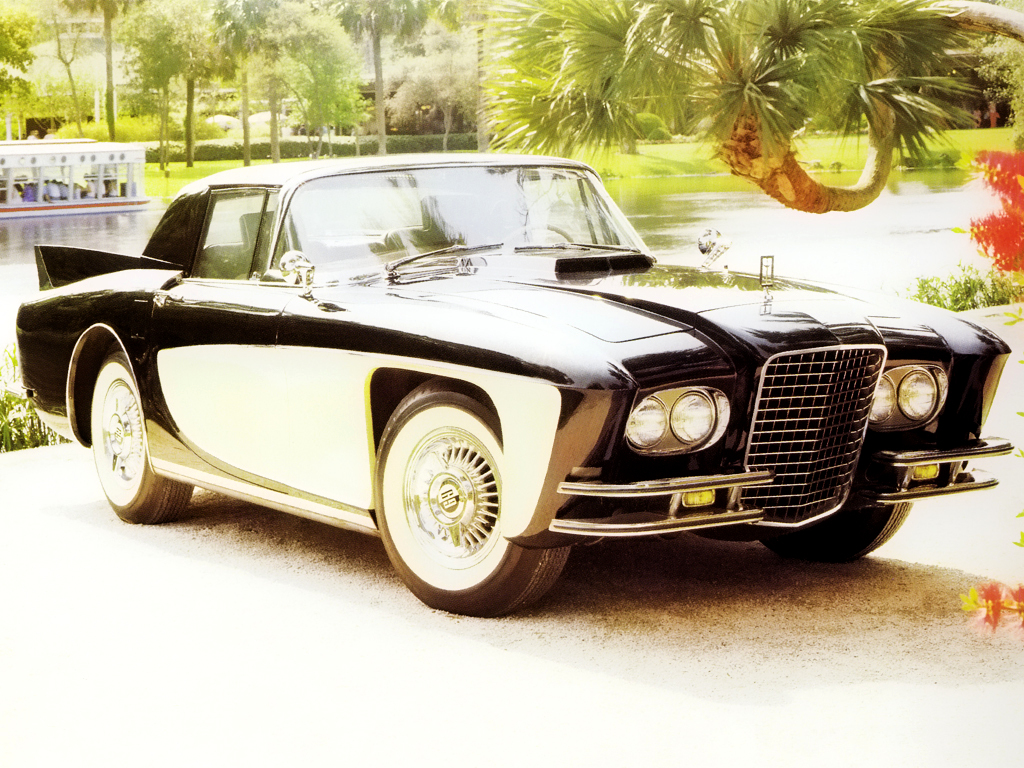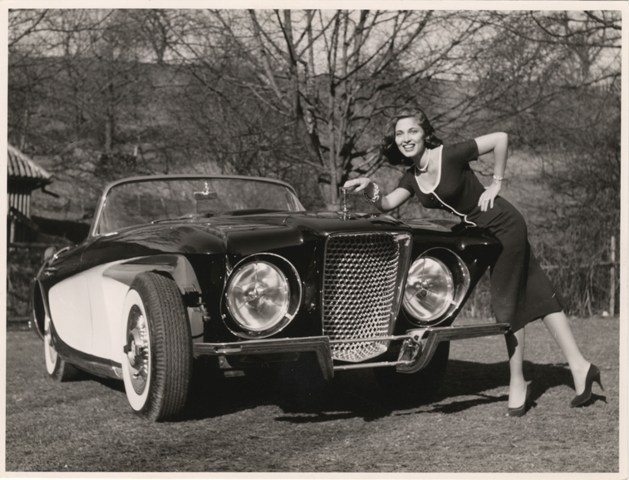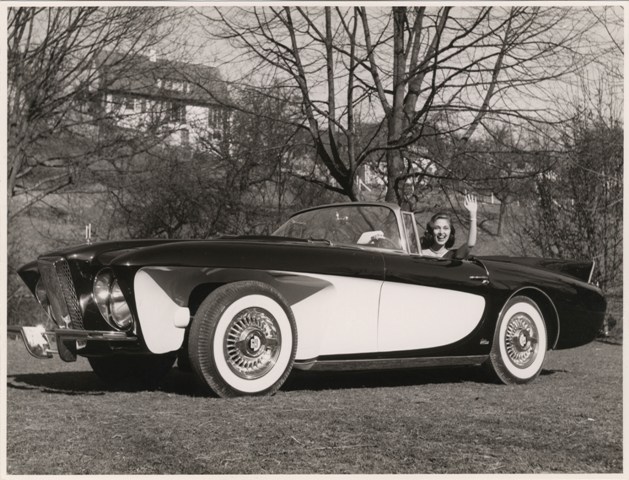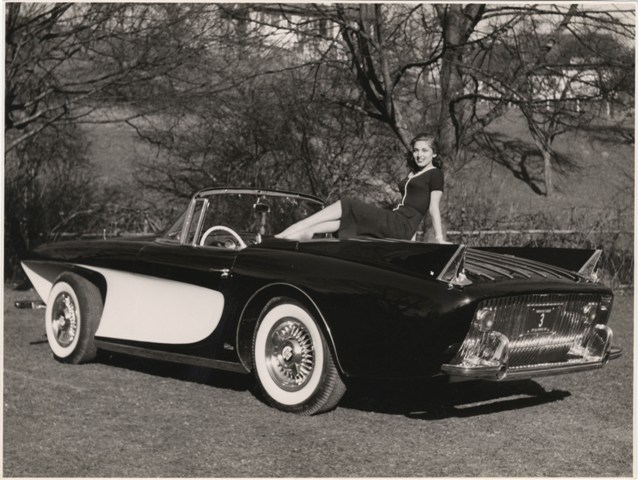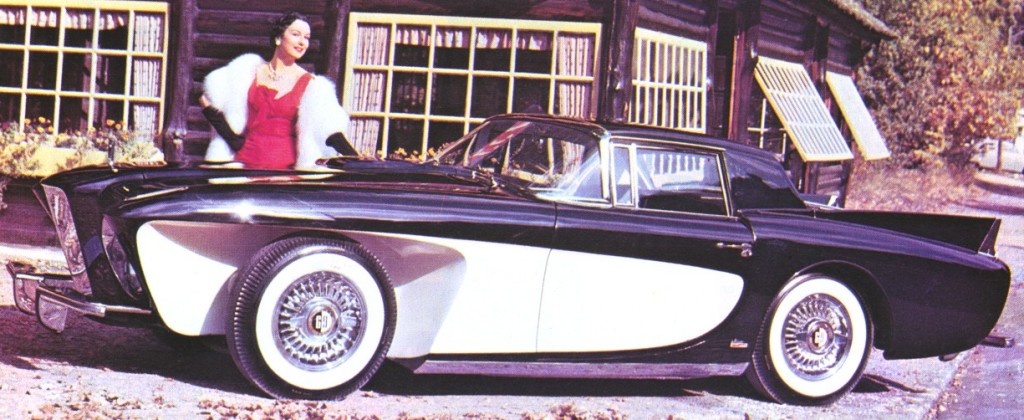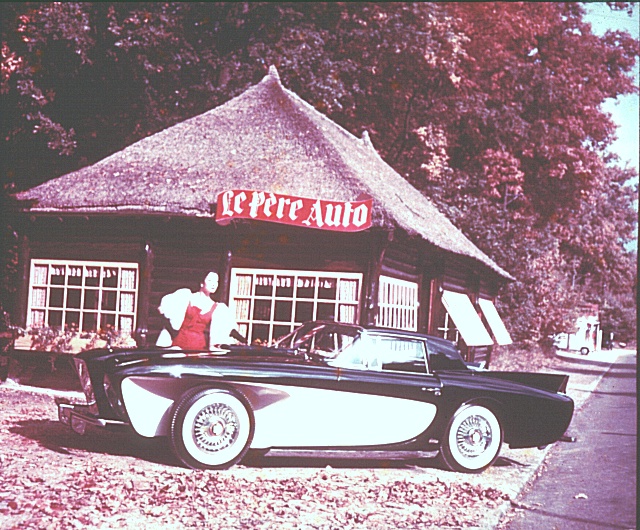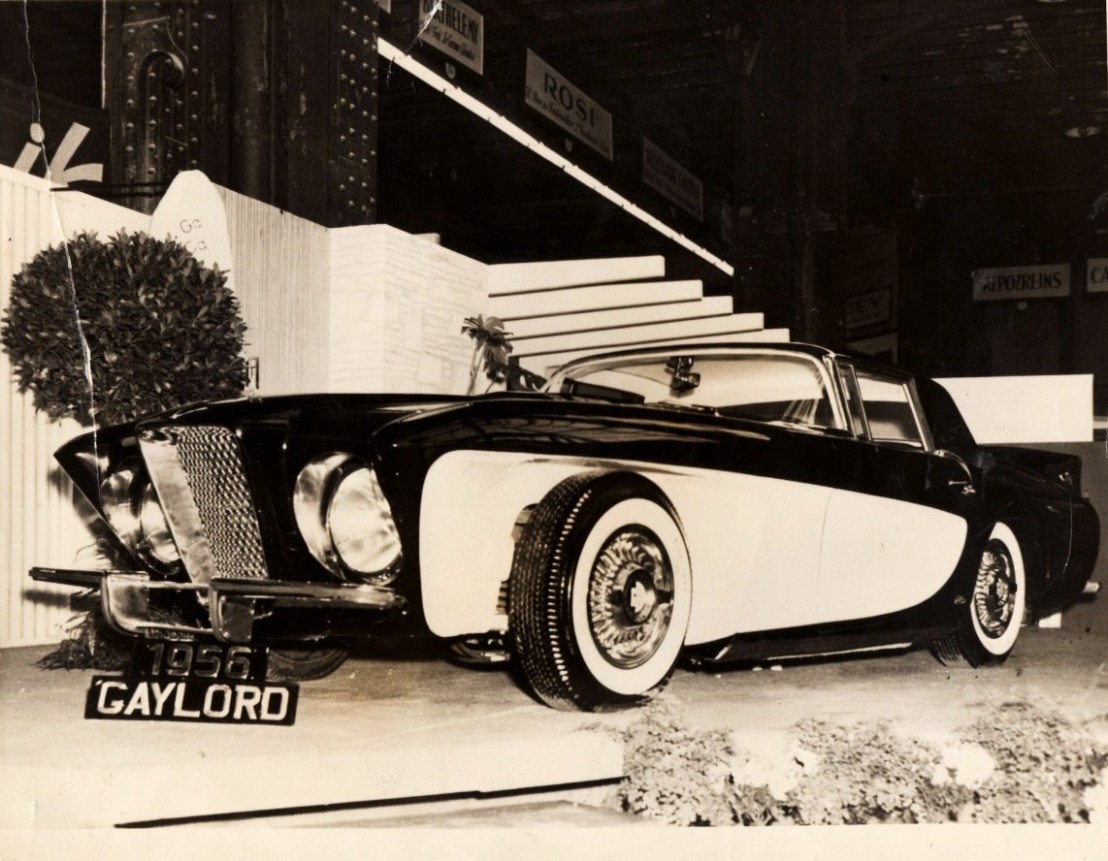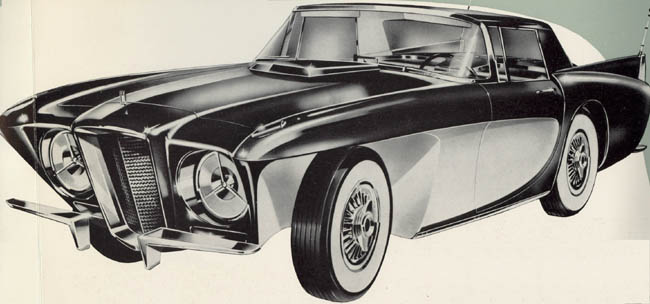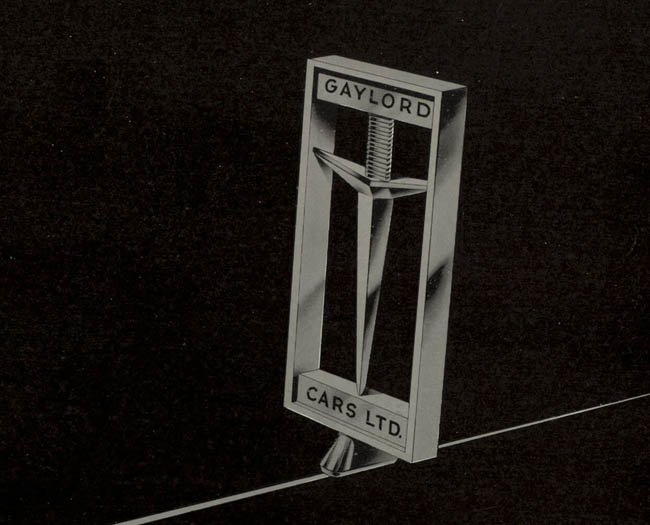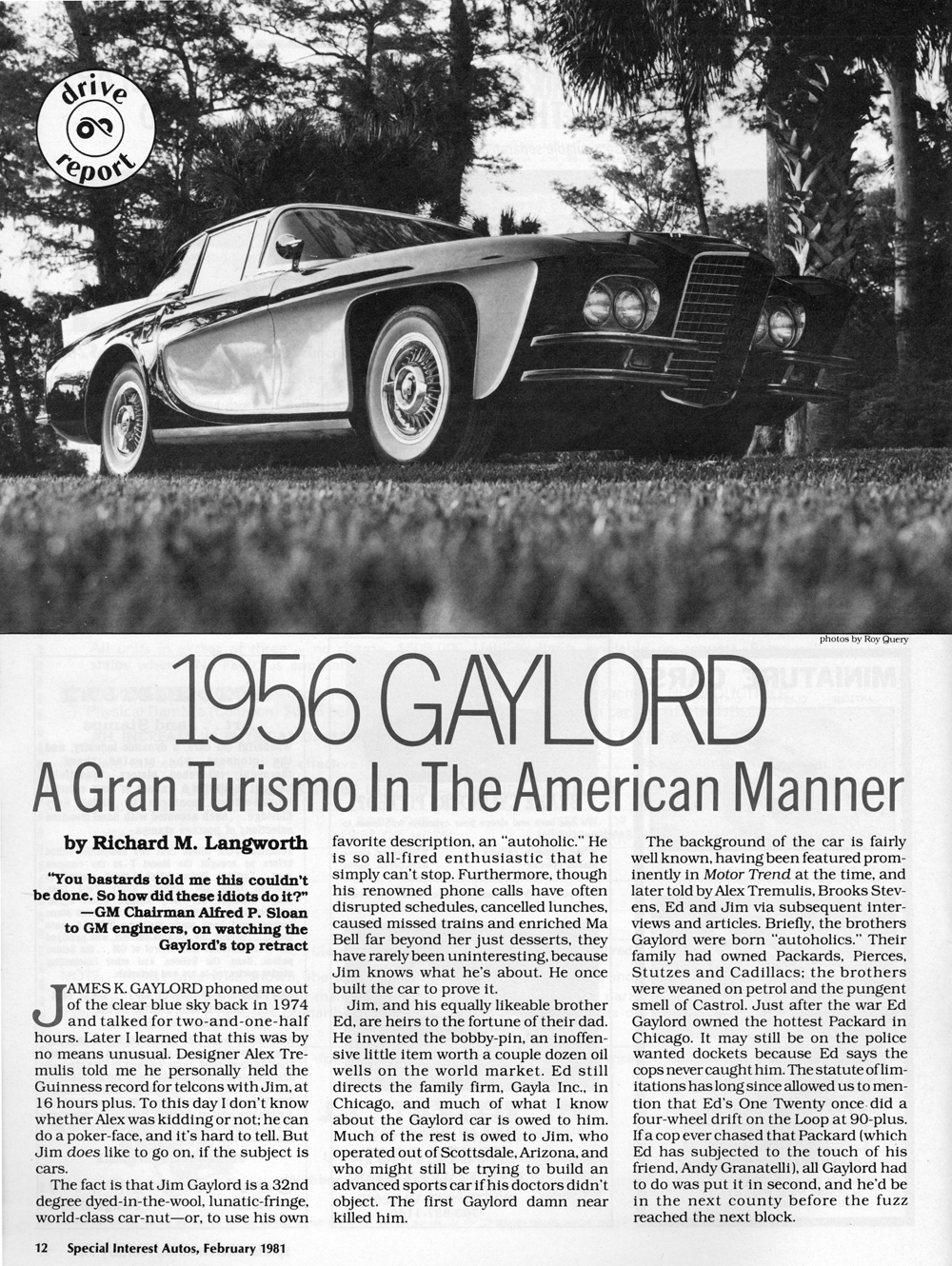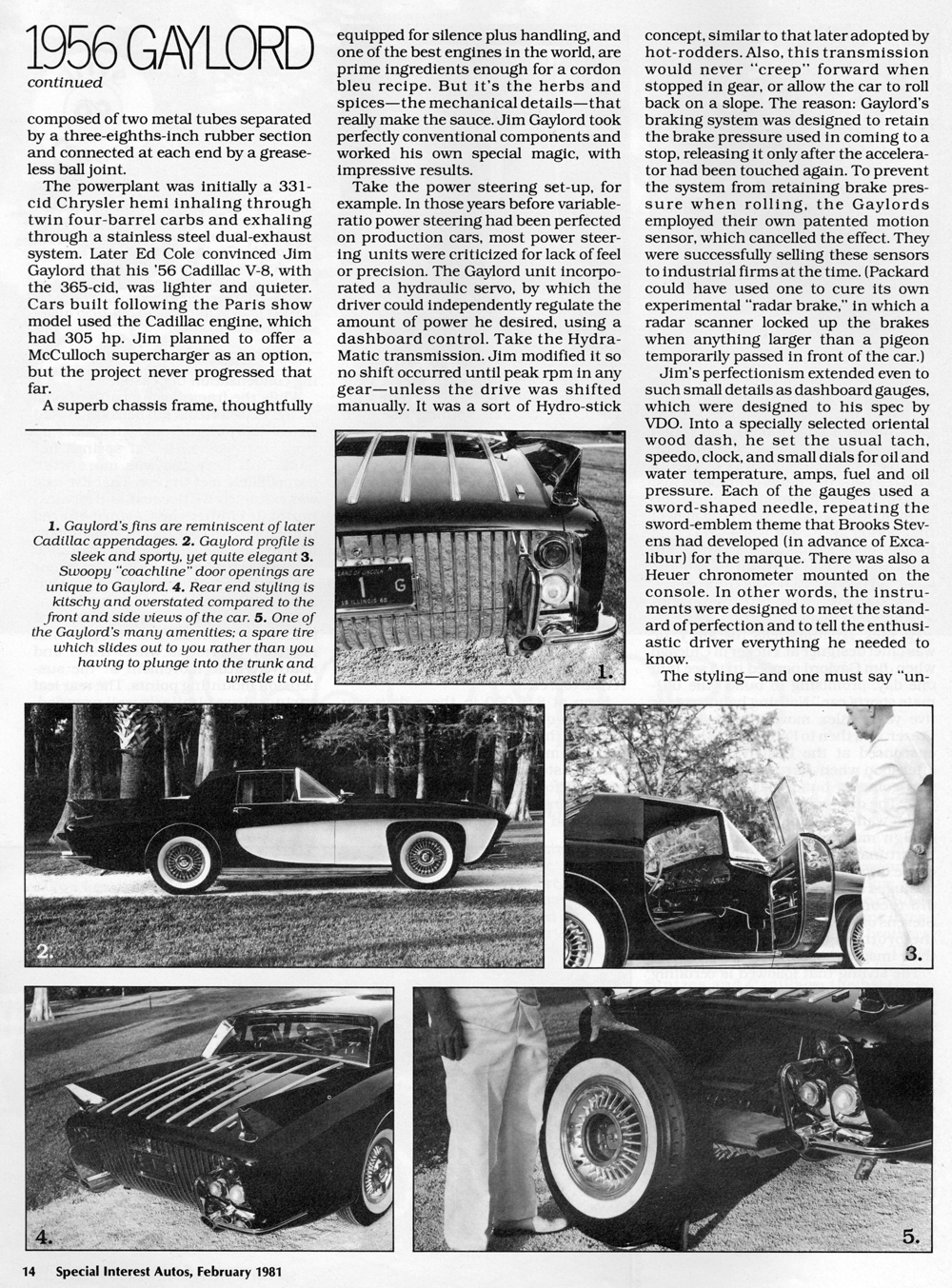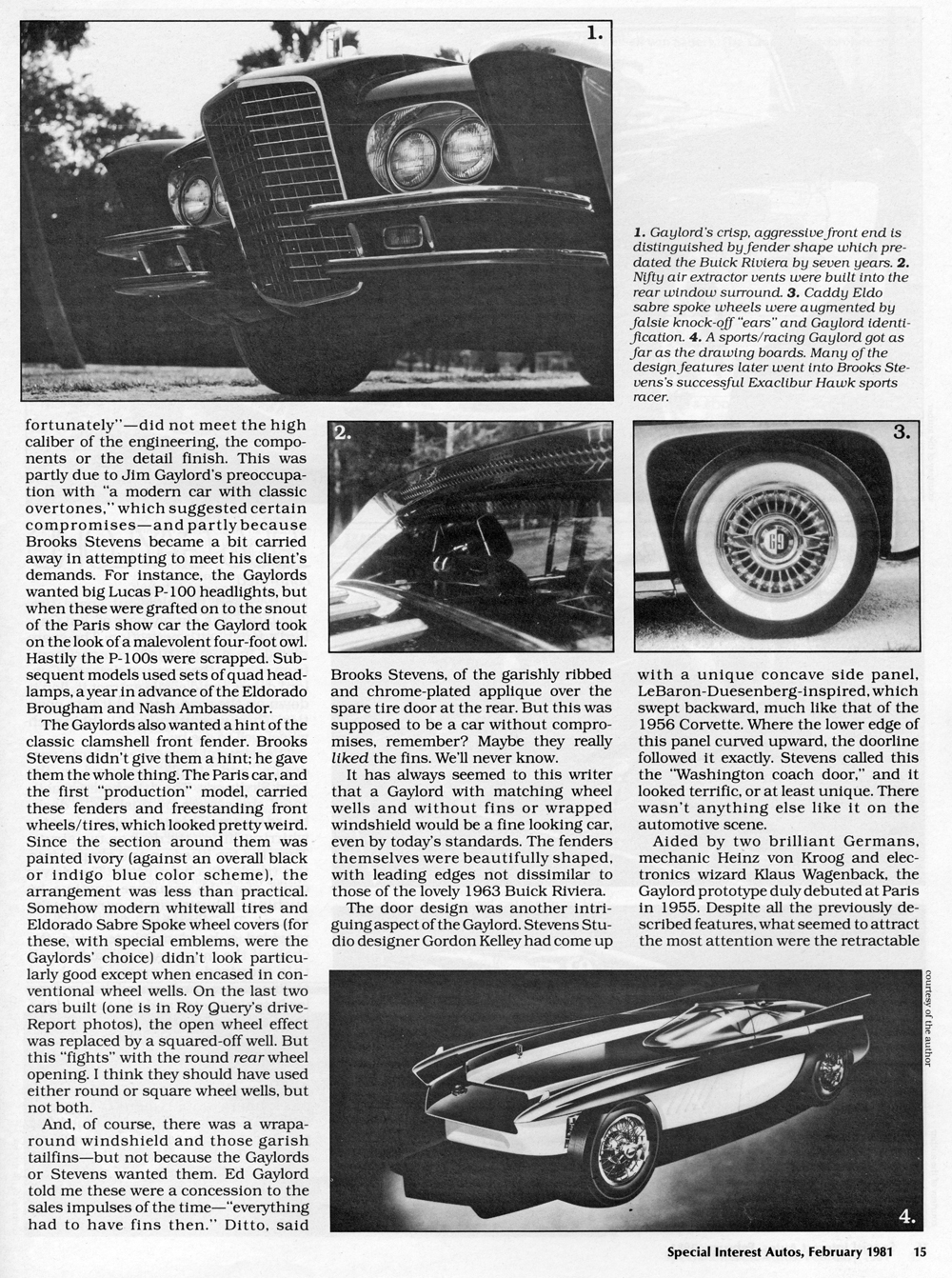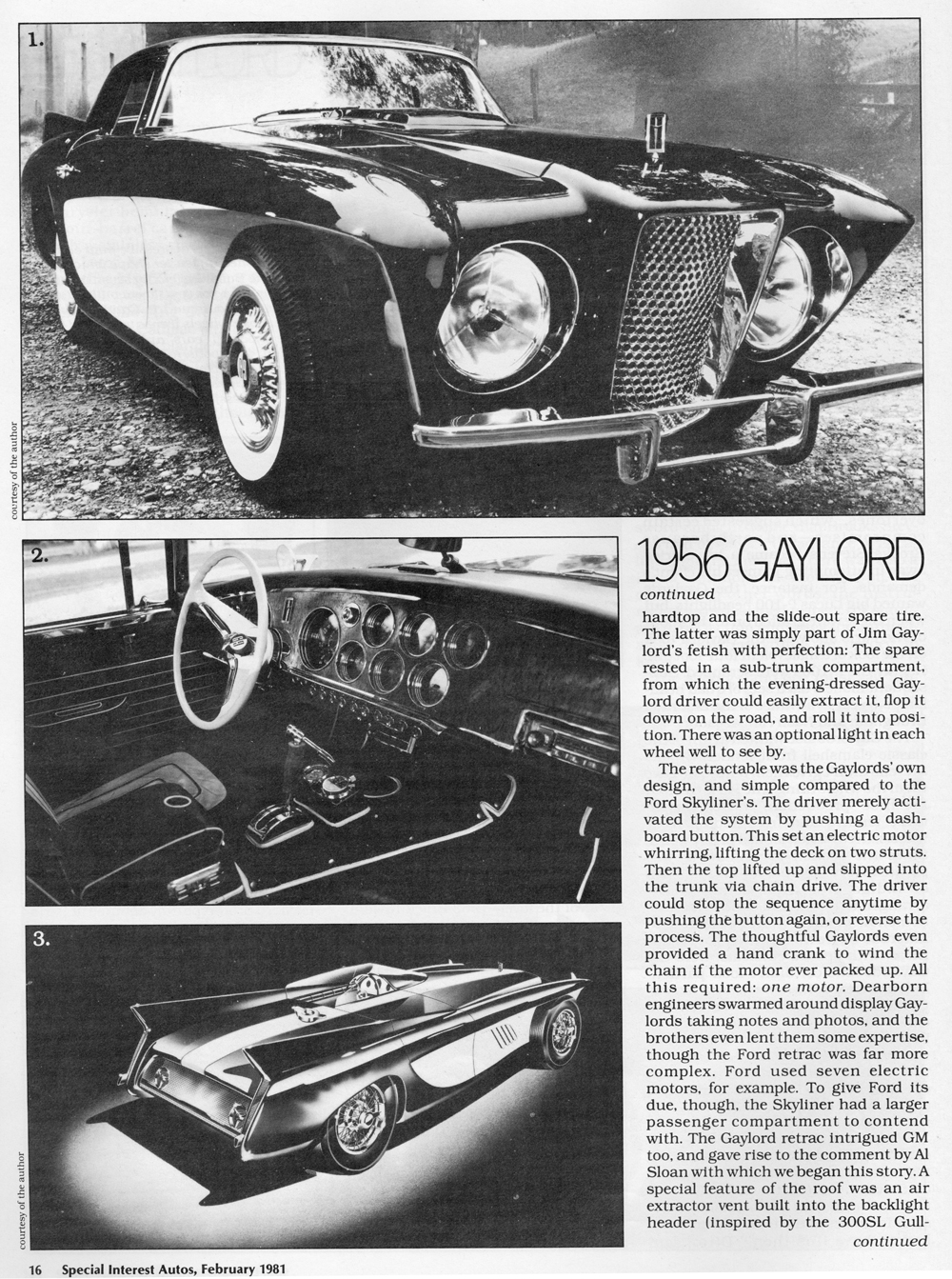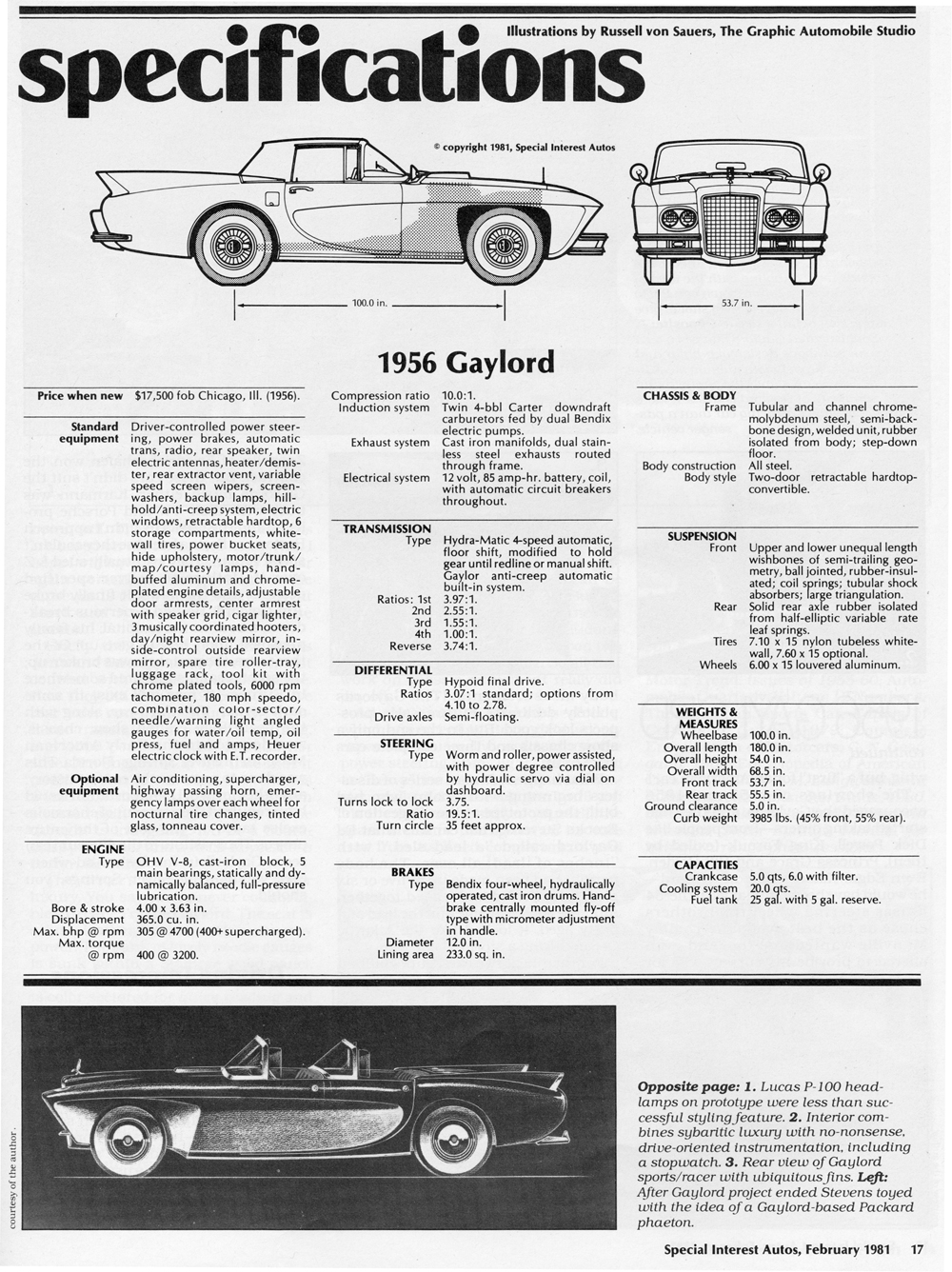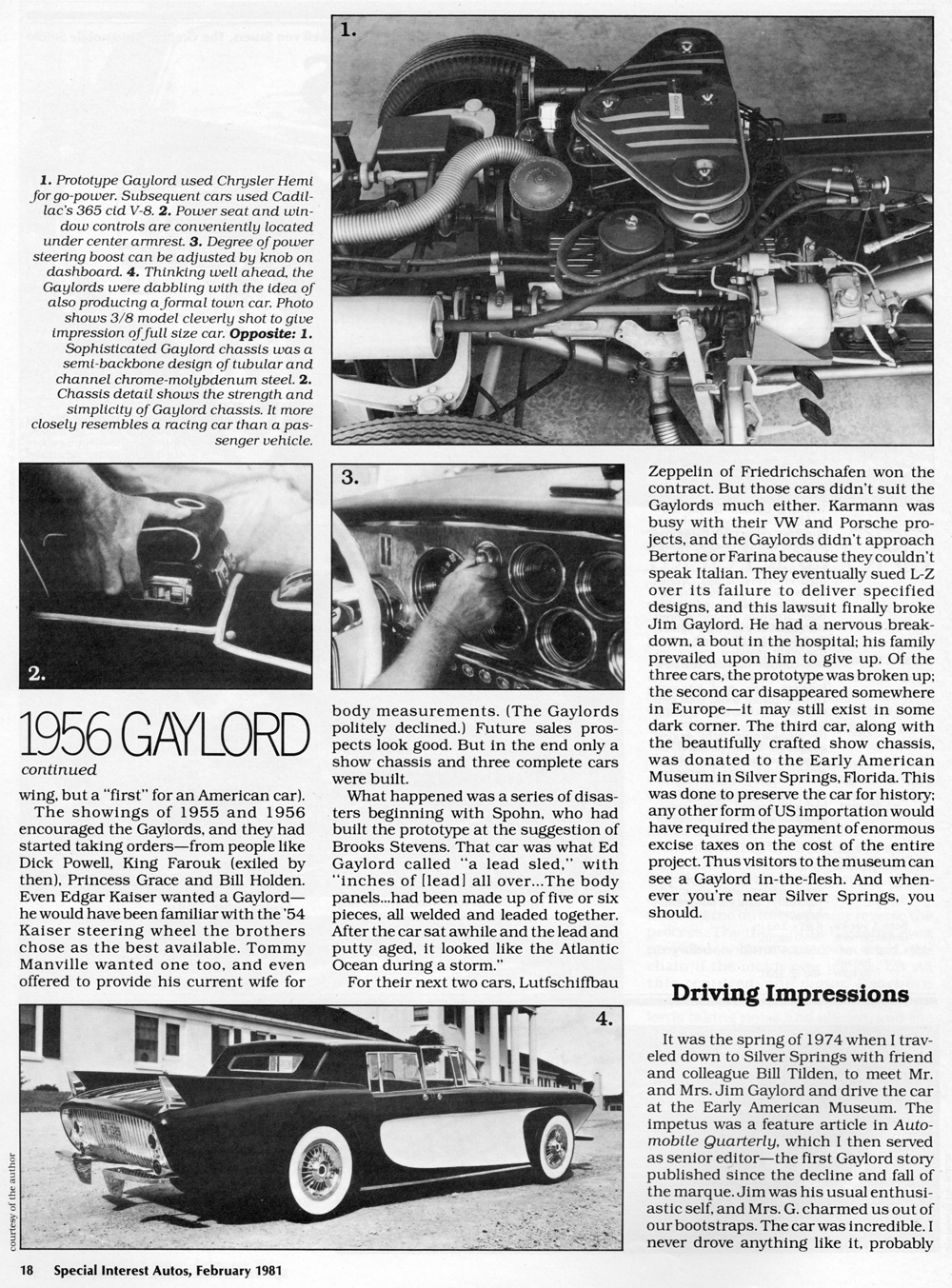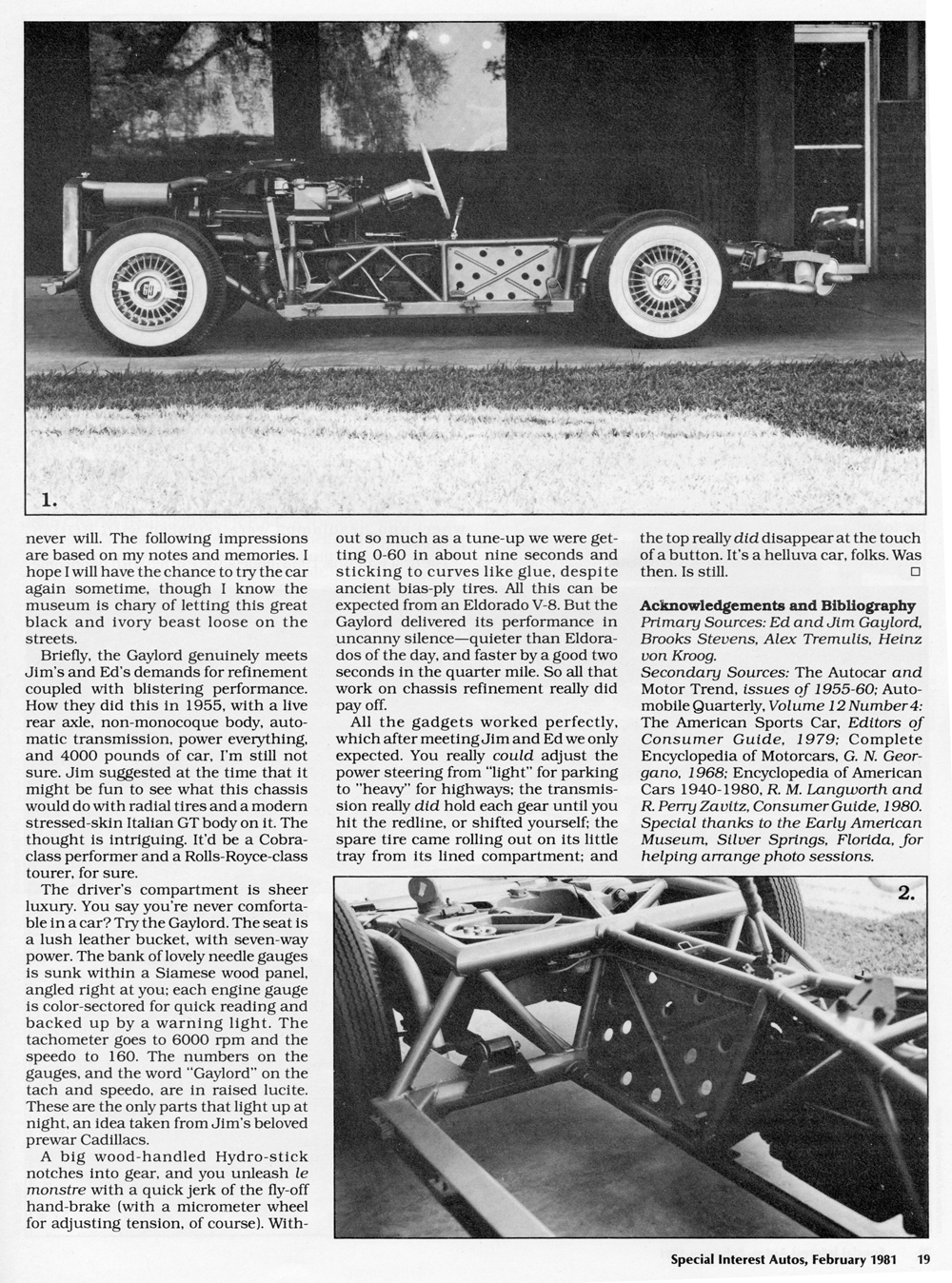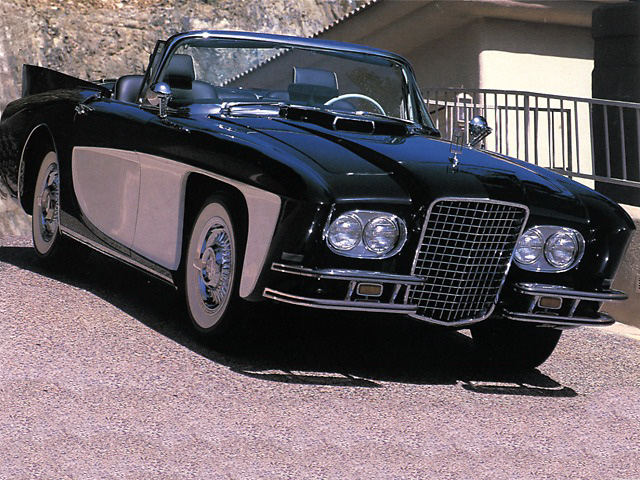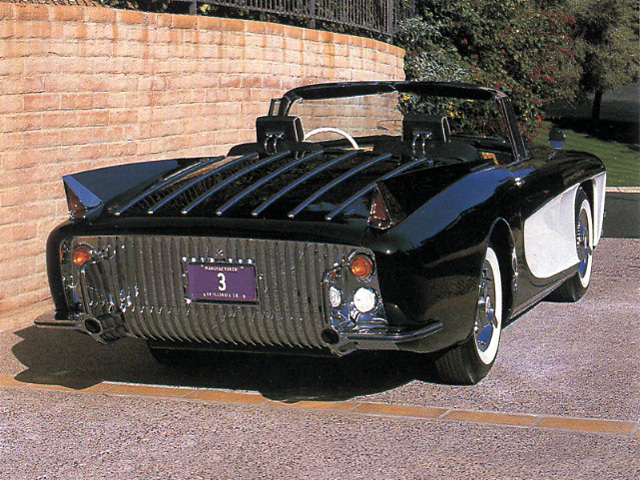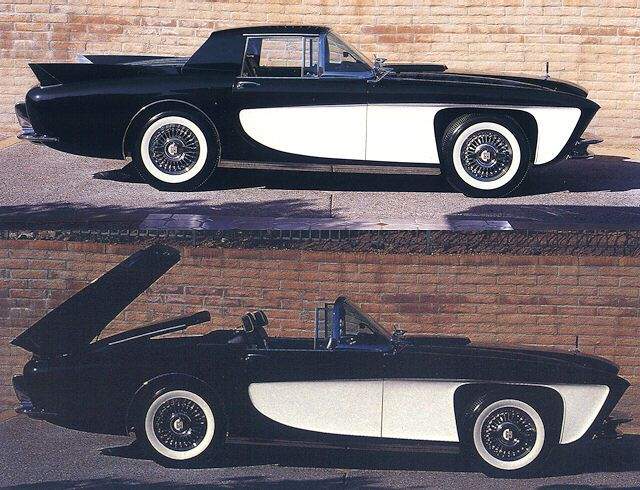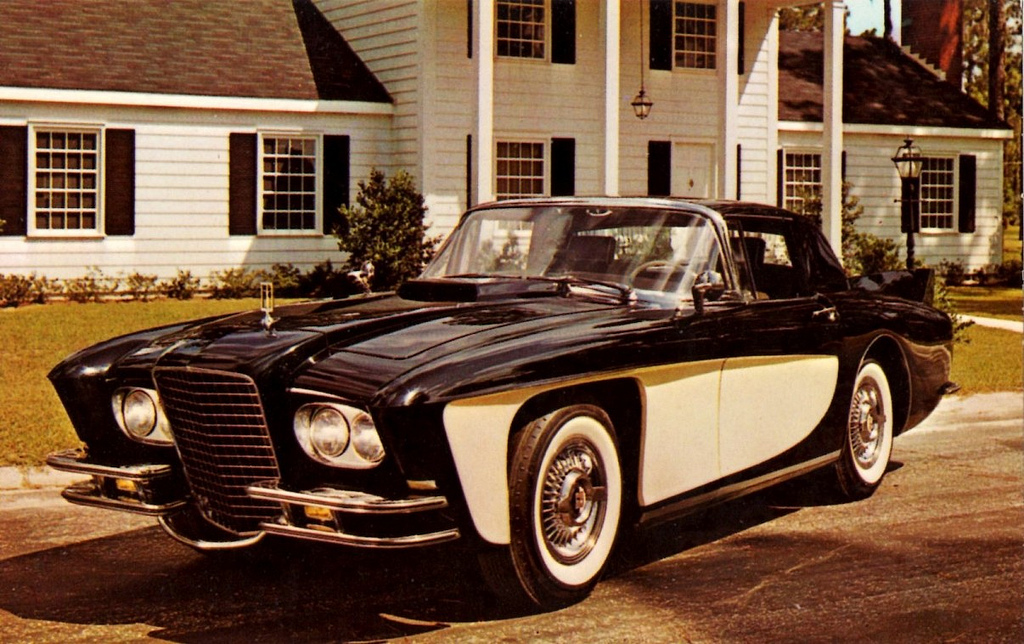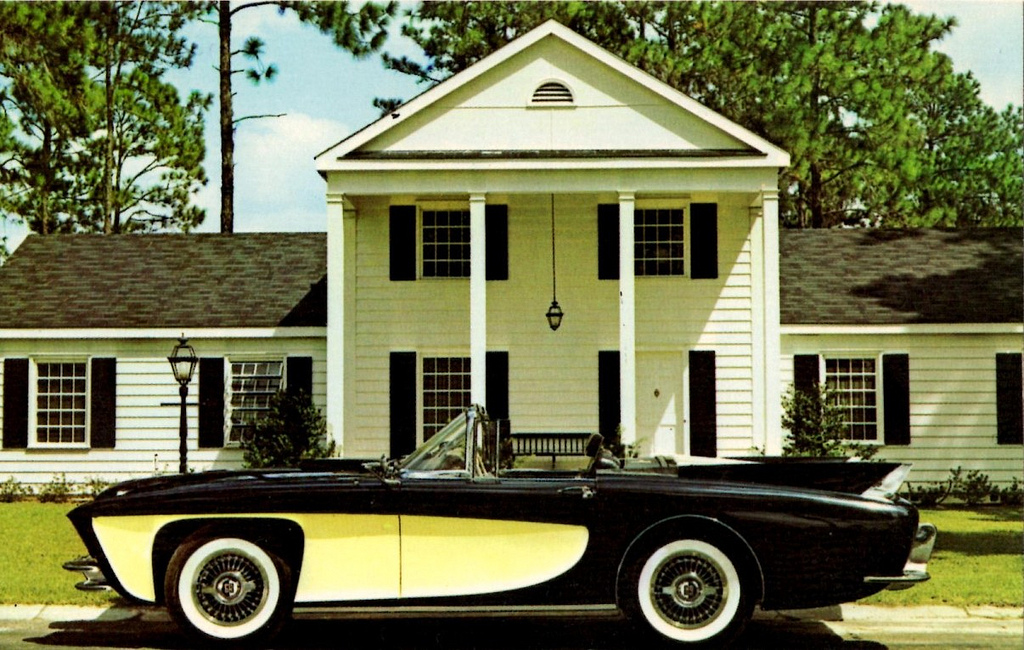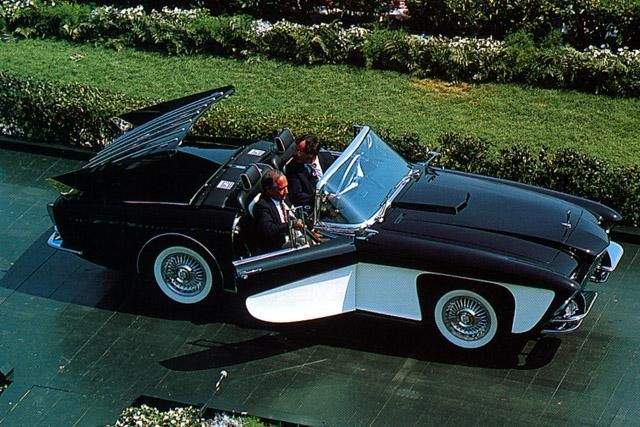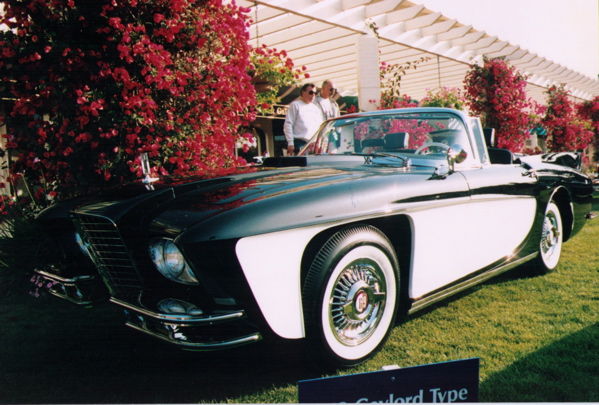Brothers Jim and Ed Gaylord, in a quest for the ultimate sports car, commissioned the famed Brooks Stevens for the 1950s Gaylord concept cars design. Stevens was an industrial designer, and the brothers asked him to build the first of their Gaylord concept cars for the 1955 Paris Auto Salon. His prototype was hastily completed and arrived just in time.
A garish, finned affair with de rigeur wrapped windshield, it carried a vertical grille opening reminiscent of the Classics of the 1930s. The grille was flanked by two huge headlights of the sort one would expect to see on a prewar Rolls-Royce, but in a front that was thrust rakishly forward at the top. Front fenders were angled to match, and were also cut back around the front wheels to leave them fully exposed.
A contrast-color panel swept back from the fender hollows to the bottom and trailing edges of the doors, an effect Stevens called the “Washington Coach Door Line.” This was finished in ivory to contrast with the black used elsewhere — Stevens’ favorite color scheme.
The rear end was topped by moderately tall fins, which were coming into fashion when the car was designed. Taillights were nestled into chrome bezels that capped the ends of the fins. Vertically ridged bright trim suggested rear grillework, which housed additional rear lights.
Dual exhausts exited just above the narrow rear bumper. Seven chrome strips rode on top of the rear deck, a feature DeSoto would adopt later for its hot Adventurer. Extremely deep side sculpturing allowed for fully exposed front wheels and tires.
A second, somewhat cleaner-looking car was soon constructed with smaller headlights but conventional fenders instead of the cutaway type. The biggest change in the rear was that the rear bumper had disappeared; in its place was a two-piece bumper that housed the exhaust outlets and left the entire center section of the car vulnerable.
A retractable hardtop was again on hand per Jim’s instruction, with a recessed rear window and integral air-extractor vents, thus pioneering “flow-through” ventilation.
At the touch of a button, the rear deck lifted and a chain drive pulled the top back into the trunk. In this, the Gaylord was a full year ahead of Ford’s 1957-59 Skyliner, which was considerably more complicated.
The chassis was Jim Gaylord’s own design, a strong chromemoly tube type with coil springs and A-arms in front and a beam axle on leaf springs at the rear, all very well damped.
The first prototype carried a 331-cubic-inch Chrysler Hemi, but Cadillac V-8s were installed in two later cars (which also had full front fenders) as well as in one unibodied chassis. The chosen transmission was GM Hydra-Matic, modified so that full-throttle automatic upshifts came at peak revs.

